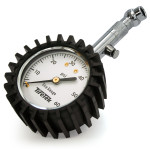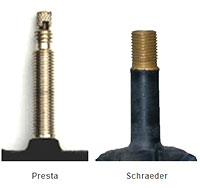ANSI is the acronym for the American National Standards Institute, a non-profit organization that oversees the development of voluntary consensus standards for products in the United States.
B40.1 is the specific standard that has been issued by ANSI for pressure gauges, with dial-type pressure gauges having four grades of accuracy: A, B, C, and D.
All of our TireTek tire pressure gauges meet ANSI B40.1 Grade B specifications, which is the highest accuracy standard typically used for tire pressure measurement (with ‘A’ being the most accurate and used mainly for industrial applications).
In practice the ANSI B40.1 Grade B certification means that the mechanical accuracy rating of our tire pressure gauges will be ± 2% from 25% to 75% of scale and ± 3% below 25% and above 75%. So a 60 psi range tire gauge is accurate to ± 1.2 psi from 15 to 45 psi and is calibrated to ± 1 psi at 30 psi.


